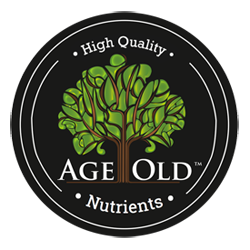Potassium: An Essential Element for Vigorous Growth
One of the elite 17 elements, potassium (K) is essential in the growth, development, and reproduction of plants. Along with nitrogen (N) and phosphorus (P), potassium is categorized as a macronutrient and is nicknamed “the regulator” because it’s actively involved in the activation and regulation of numerous plant processes. Since a plant needs potassium in relatively large amounts, let’s delve into how to apply this important element and how it functions in a plant.
How Potassium Functions in a Plant
Potassium behaves differently than the other macronutrients nitrogen and phosphorus when it enters a plant in the sense that it does not become a part of the plant’s organic matter structures. Instead, it enters into a vast array of plant cells and is crucial in the activation and successful execution of numerous chemical and physical plant processes.
Potassium is essential for the activation and manipulation of over 60 enzymes by helping to manipulate the shape of the enzyme molecules so that their “active sites” are accessible and ready to work. Potassium can also neutralize organic anions (negatively charged ions) and other compounds within the plant to stabilize the plant’s internal pH between 7.0 and 8.0, the desired level for optimal enzyme activity. Adequate levels of potassium within a plant and its cells helps to ensure a higher level of enzyme activity and at rates that can support vigorous growth.
Potassium also plays a vital role in water and elemental nutrient uptake and the regulation of the stomata, the tiny pore-like structures on the leaves and stems that open and close to allow oxygen and water vapor to exit the plant and carbon dioxide to enter. They will also stay closed during times of water scarcity to help maintain proper water levels inside the plant. Specialized cells on the outer edges of the stomata that are called “guard cells” control the opening and closing actions. Potassium is involved in regulating the function of these cells. When potassium levels are low, the stomata will be slower to open or shut and will have a harder time staying closed tightly. Tightly closed stomata help to reduce water loss from the plant and, likewise, stomata that are more quickly to open will allow more carbon dioxide to enter the leaf resulting in increased rates of photosynthesis.
Signs of Potassium Deficiency
When potassium levels are too low, the physical quality of the plant and its flowers or fruits diminishes. This can lead to less disease-resistant plants and also have an effect on the structural strength of fruits and vegetables, resulting in a shorter shelf life. Periods of potassium deficiency, even short ones, can cause a plant to produce lower yields. This is especially true when deficiencies occur during critical stages of development such as the reproductive phase when the flowers and fruits are formed.
Visual symptoms of potassium deficiency will first appear on the older leaves as potassium is highly mobile and will be moved to newer areas of growth. The older leaves will begin to develop marginal chlorosis which will spread to the edges of the leaves resulting in a burnt or scorched appearance. Potassium-deficient plants may also wilt more readily as moisture levels are not being properly regulated and the plant can become more susceptible to attacks from pests and disease.
Signs of Excessive Potassium
It is important that the grower pay close attention to the amount of potassium being supplied to a plant because most plants can absorb more potassium than is needed to function properly. This tendency is referred to as “luxury consumption.” When potassium is in excess, it can result in a deficiency of nitrogen and also can interact unfavorably with calcium (Ca) and magnesium (Mg), possibly resulting in a deficiency of one or both of them. The general rule to remember is that plants prefer higher levels of nitrogen and lower levels of potassium during the vegetative growth stages and the opposite for the flowering and fruiting stages. Also, excessive levels of calcium in the root zone can result in a reduced uptake of potassium.
How to Apply Potassium
Terrestrial soils often contain rather high levels of potassium, but it exists as a part of other soil mineral compounds and is generally unavailable for root consumption.
On fertilizer labels potassium is represented as its oxide K2O and is referred to as soluble potash. Hydroponic nutrients typically contain one of the following forms of potassium: potassium nitrate, mono-potassium phosphate (MKP), or potassium thiosulfate (KTS) but the choices are not limited to these alone. If a grower is looking for a source of potassium that is void of extra nitrogen or phosphorus, a popular choice is potassium sulfate. Some potassium sulfates have been approved for organic crop production, including some that are OMRI certified. Other organic fertilizers containing potassium are composted organic material such as poultry manure and vermicompost.
Once the potassium requirements are carefully dialed in, this element will go to work to allow the plant to grow to its full potential!


